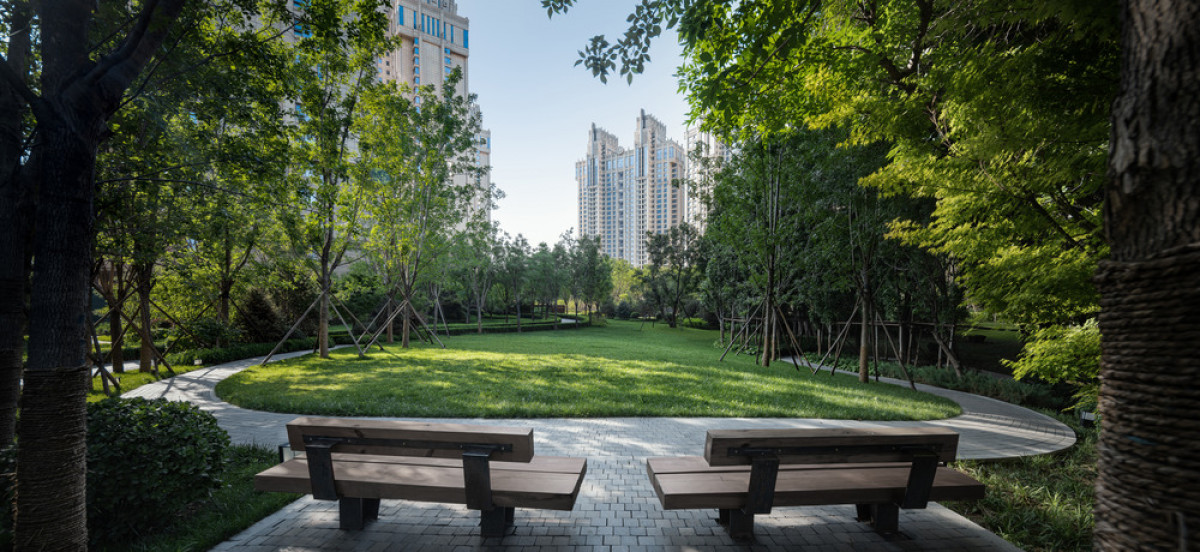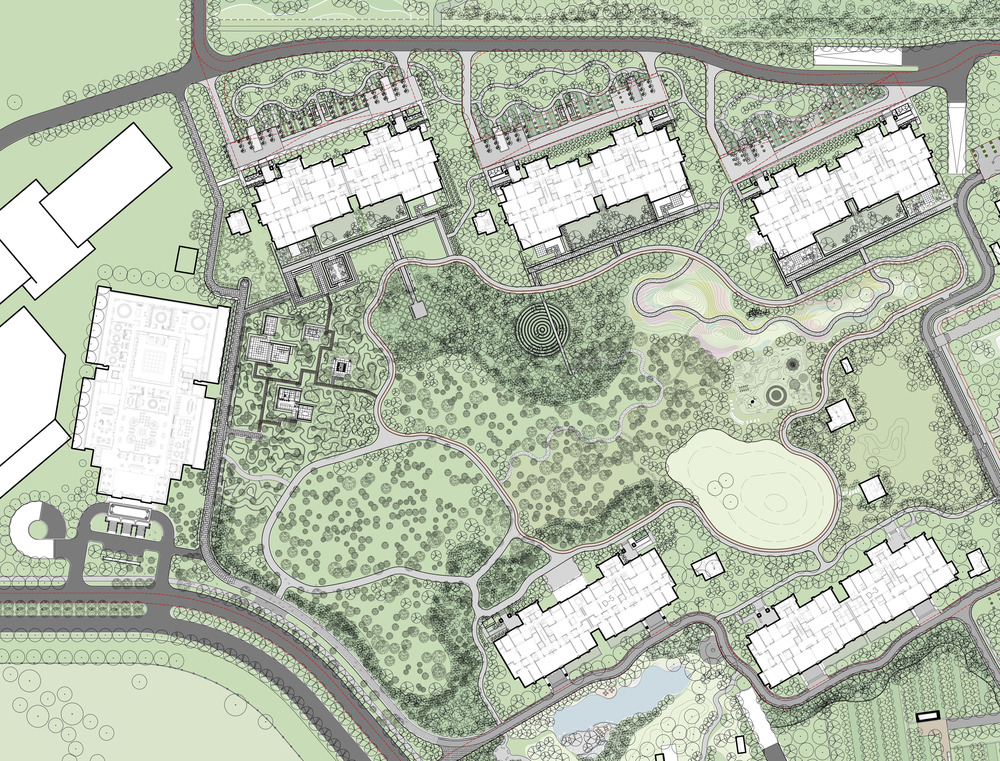25 Jul 2022

Beijing MAHA Residential Park wins the 2022 Architizer A+ Popular Choice Award in the Private Garden category. With the MAHA Residence Grand Opening scheduled for October of this year (2022), the soft opening of the MAHA Gardens last summer featured an exclusive open-air fashion show by British designer, Jenny Packham.
Ballistic Architecture Machine (BAM) worked closely together with renowned hotelier, Adrian Zecha, and the MAHA team to design the landscape and develop a multiphase masterplan strategy to seamlessly weave a complex mixture of preexisting contemporary and classically-styled elements on the site.
Also Read | Kareena Kapoor Khan’s new home in Bandra with European styled decor & wooden detailing
The fast-paced world of Chinese real-estate development is not well suited to ideas, themes, and methodologies based on slowly maturing landscapes. However, BAM believes that luxury in a landscape is fundamentally an expression of time. While the quality and richness of materials in architecture and interior design tend to be defining factors of 'luxurious', BAM believes that time occupies that role in a landscape - time is given to mature, time and effort to care for it and maintain it. A luxurious landscape can therefore be understood as a physical manifestation of time.
Also Read | Shiro Kuramata’s Samba-M shines again with Ambientec at the supersalone in Milan
The site occupies the northern edge of Chaoyang Park inside the Fourth Ring Road. At the time of engaging BAM, the site architecture was a mixture of four occupied residential towers, five incomplete and unoccupied towers, a Chinese-styled members club, and multiple classically-styled gatehouses in varying states of functionality. The existing landscape was also a smorgasbord of functional and dysfunctional spaces, including a scaled replica of an imperial garden, and a beautiful and maturing man-made forest.
BAM’s design for the landscape and master plan unifies disparate aspects of the site together in a seamless series of gardens, functional spaces, and circulatory pathways. The existing landscape spaces are blended with new landscapes. Conflicting styles, epochs, and cultural references are reconciled with a minimalist landscape approach.
Also Read | Arabic Resin art decor launches by Artist Madhavi Adalja

China’s real estate market is constantly changing. Even before the recent economic meltdown, in part driven by the collapse of one of China’s largest real estate developers, the focus was shifting toward redevelopment and upgrading of existing projects, rather than on expanding into new and increasingly further territories. The MAHA residential park is an exemplar of this changing mentality in the Chinese development industry, and as more and more projects are reimagined, the Chinese development and associated design communities will need to grapple more seriously with how to design by integrating, rather than erasing existing site conditions.
Also Read | Arabic Resin art decor launches by Artist Madhavi Adalja
In most regions of the site, buggy circulation is pushed to the periphery. However, in some key areas, the buggies pass through the center of the site. In those areas, it is critical to define a clear boundary beyond which the buggies should not venture. A low retaining wall, punctuated with low heavy stone bollards marking important entries, demarcates the boundary of the central forest.
Also Read | 7 decor must haves for your living room
BAM carefully picked the best trees to plant in the MAHA gardens from sites with ancient histories. The evergreen pines come directly from the base of Taishan, in Shandong Province. The planting was upgraded to include more all-season greens. Seasonal highlights feature plant species such as Wysteria vines, maple trees, plantain lilies, and red dogwood, infusing color and character throughout the year.
The circulation around the site is defined through a hierarchy subtly expressed through the paving. The main loop, which circumambulates the site, is divided into two materials - a permeable poured material ideal for jogging or children’s scooters, and a walking path of granite cobbles. The stone-stepped pathway slows the pace of the walk, allowing one to appreciate the presence of the forest from within.
Although Beijing’s climate can be extreme, it also experiences the fullness and distinct qualities of each season. Typically, the Winter and Summer seasons are the longest, punctuated by short, but much-anticipated, Spring and Fall. Gardens for each season are designed to take advantage of the planting’s seasonality, bringing unique identities to each space. The Wintergarden is a garden contained within a traditional garden wall that is punctuated with minimally expressed windows and gates. Planted only with evergreens, the garden will remain green through the gray and frigid Beijing winter.
The entry of the Wintergarden, shrouded by evergreens, peers into the man-made deciduous forest, with a meandering path guiding the way. The Wintergarden doubles as a small multifunctional space for parties, events, or tea ceremonies. The space is occupied by sculptural pines, which appear to dance together in the space. During the winter season, the austere garden comes to life when snow periodically blankets the space, making the pines appear even more expressive than usual.
A garden cannot be constructed in a day. It must be allowed to grow, and landscapes must be maintained, cared for, and cultivated. When one looks at a masterful or luxurious landscape, one can see time itself in its years of growth, years of maintenance, and seasonal progressions. Unlike architectural fields that depend upon rare or expensive materials to express luxury, a landscape can only truly achieve luxurious expression measured in years or decades. BAM’s idea is to establish a grander sense of time by planting the foundations of a landscape that will grow and continue to mature for generations.
Also Read | GROHE’s retrofit line bets on convenience and experience
Technical sheet